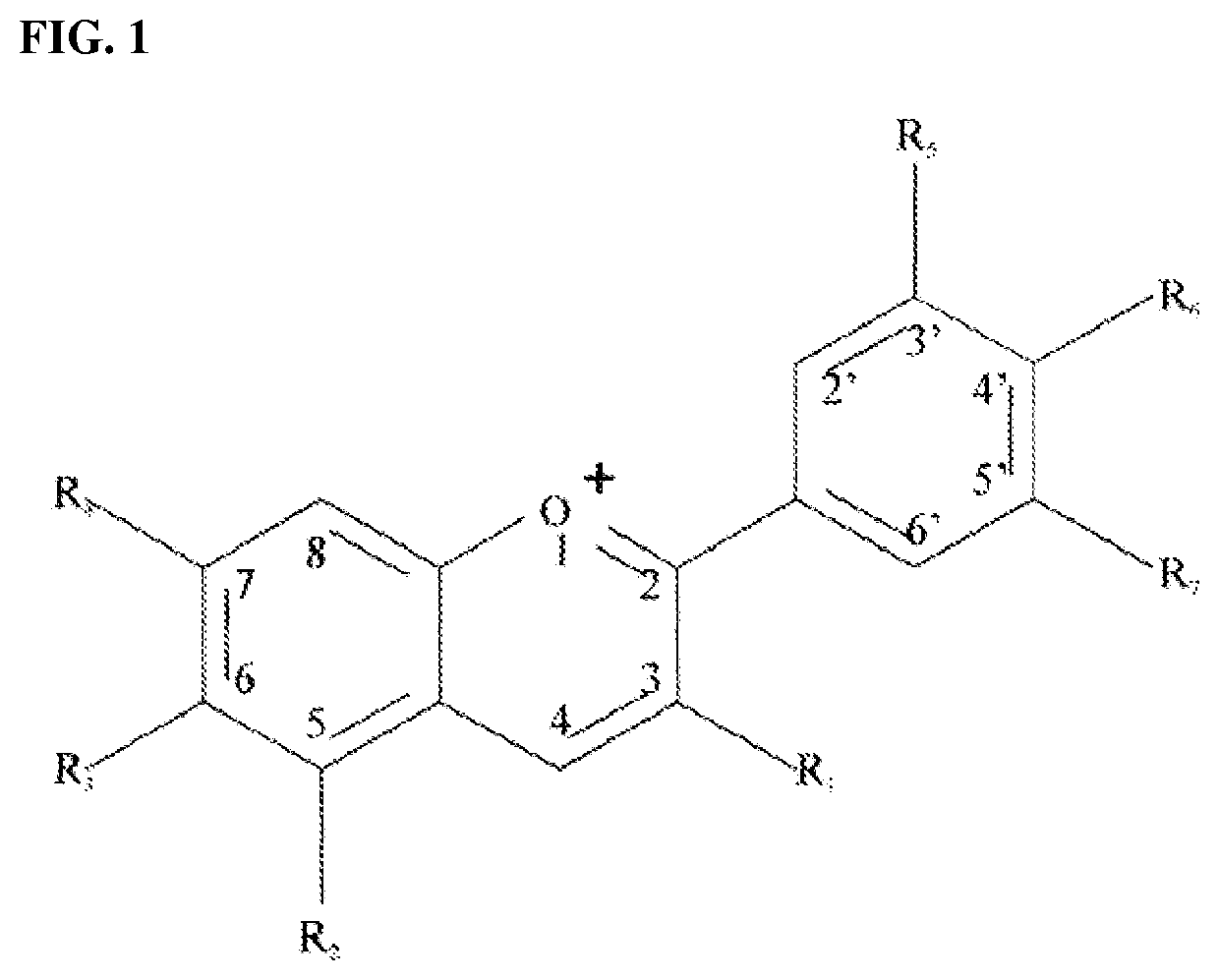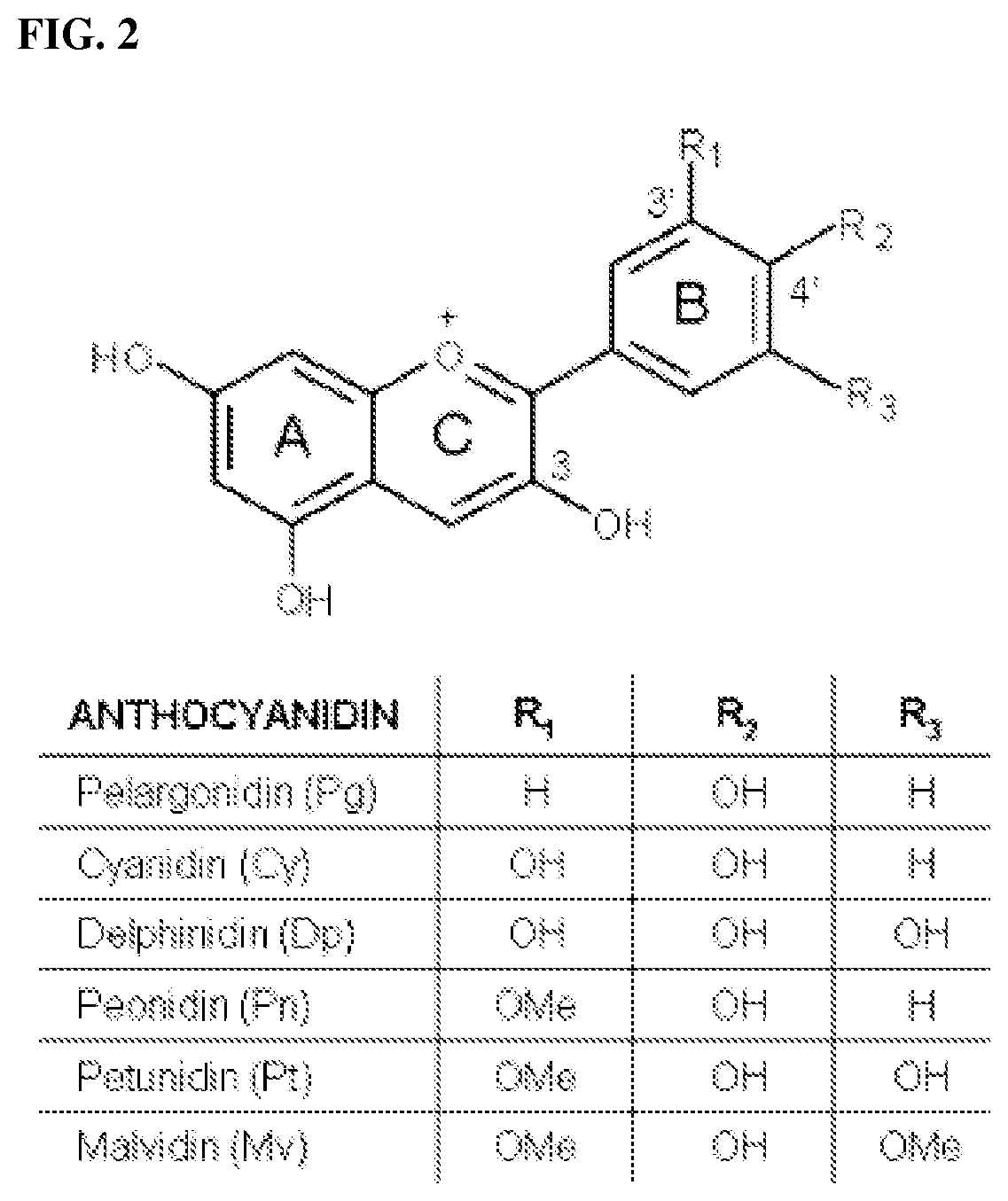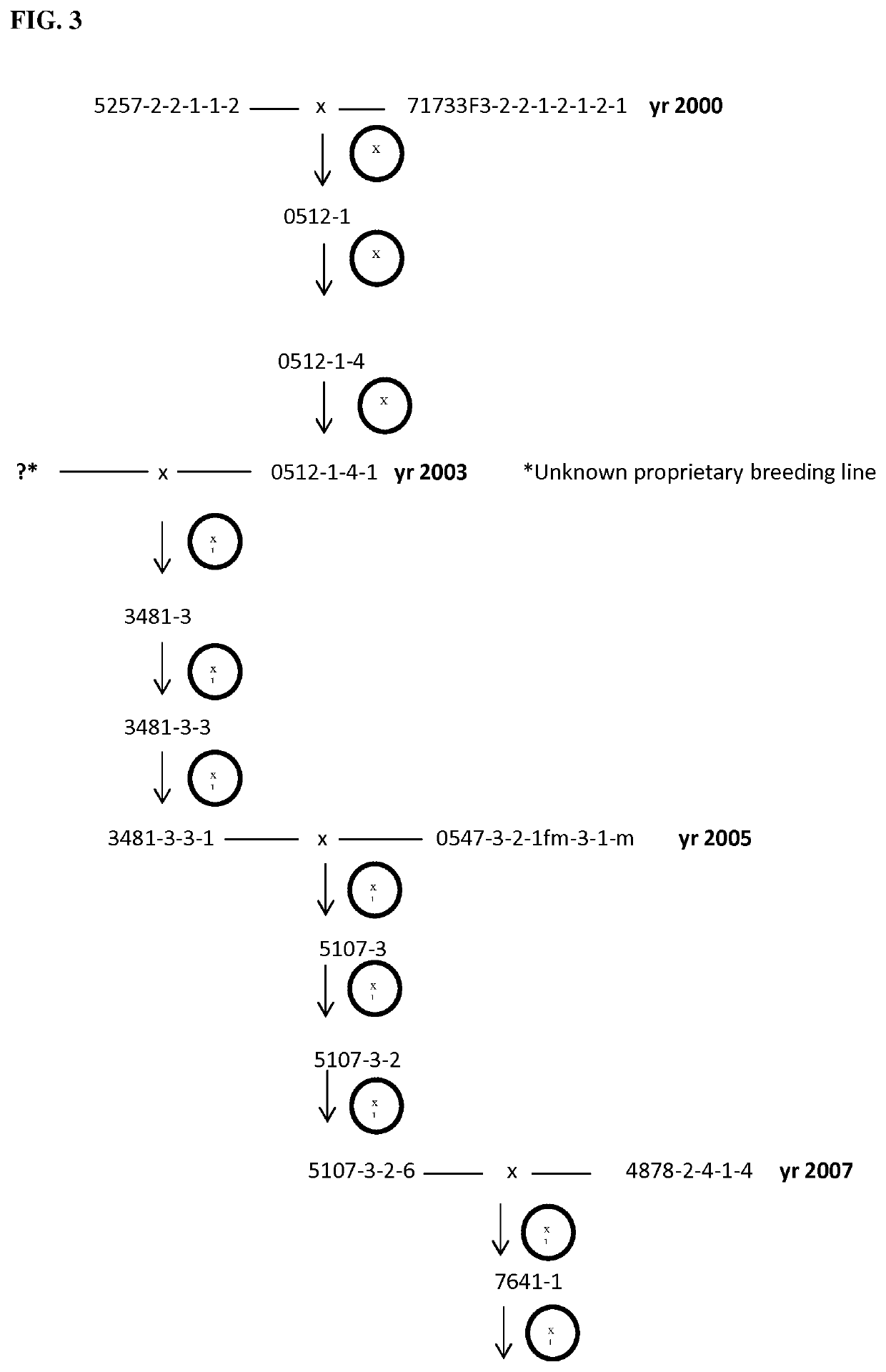Altered pigment deposition in Tagetes patula
a technology of pigment deposition and tagetes patula, which is applied in the field of plant breeding, can solve the problems of hybrid plants that differ genetically, are not uniform, and perform unpredictable,
- Summary
- Abstract
- Description
- Claims
- Application Information
AI Technical Summary
Benefits of technology
Problems solved by technology
Method used
Image
Examples
example 1
Identification of Tagetes Plants with Mutant prdr1-1 Allele
[0075]The present invention was discovered in two French marigold plants, Tagetes patula, from a selfed population of breeding line 71733F3-2-2-1. The mutant marigold plants were coded 71733F3-2-2-1-1 and 71733F3-2-2-1-2. The mutant allele was designated prdr1-1 and is visually characterized by the presence of a red pigment in the lower epidermal layers of the ray florets. Early crosses with the mutant selections yielded novel red flower colors that were brighter and more intense than any previously known French marigold. The progeny plants of these crosses thus possessed different overall color patterns and different overall shades of red. When plants having the mutant allele were crossed with other French marigolds having different genetic backgrounds, new flower colors and patterns never before observed in French marigold were observed in the progeny. The unique colors developed from this new prdr1-1 mutation include but ...
example 2
Development of Homozygous Mutant Inbred Lines and Breeding of the Mutant Lines
[0077]Mutant plants designated 71733F3-2-2-1-1 and 71733F3-2-2-1-2, containing the mutant allele prdr1-1 of the present invention were self-pollinated and crossed with various breeding lines from at least as early as 1997. After up to 7 generations of self-pollination and selection from 2005 to 2012, over 12 homozygous inbred mutant French marigold lines were produced with unique phenotypes, such as different overall color patterns and different overall shades of red. All of these mutant lines were found to possess a red pigment in the lower epidermal layers of the ray florets.
[0078]Breeding of the mutant lines resulted in the identification of Tagetes plants having unique phenotypes, such as dark red pigments in the lower epidermal layers of the ray floret. One of these plants was designated Tagetes variety TAS1146954′. The origin and breeding history of proprietary Tagetes variety TAS1146954′ is presente...
example 3
HPLC Screening of Wild-Type and Mutant Tagetes patula Whole Ray Florets
[0079]Wild-type and mutant plants of Tagetes patula were grown in greenhouses in Santa Paula, Calif. using standard practices known in the art. The ray florets from fully-opened inflorescences were collected for analysis. Ray florets were removed from the base of the inflorescences and lyophilized for at least 50 hours. Samples were then ground through 40 mesh screen and stored at −20° C. after purging with helium gas.
[0080]An extraction solution of 85% ethanol and 15% 1N HCl was added to each sample to yield a final concentration of 5 mg sample dry weight / ml extraction solution. Tissue was extracted in 20-ml clear scintillation vials on a vortex shaker at 10,000 rpm for 60 minutes. The extract was filtered through a 0.45μ filter, and 10 μl of the solution was injected directly into the HPLC for analysis.
[0081]HPLC analysis was carried out on a Waters Alliance system 2690 with PDA detector. The column used was Zo...
PUM
 Login to View More
Login to View More Abstract
Description
Claims
Application Information
 Login to View More
Login to View More - R&D
- Intellectual Property
- Life Sciences
- Materials
- Tech Scout
- Unparalleled Data Quality
- Higher Quality Content
- 60% Fewer Hallucinations
Browse by: Latest US Patents, China's latest patents, Technical Efficacy Thesaurus, Application Domain, Technology Topic, Popular Technical Reports.
© 2025 PatSnap. All rights reserved.Legal|Privacy policy|Modern Slavery Act Transparency Statement|Sitemap|About US| Contact US: help@patsnap.com



